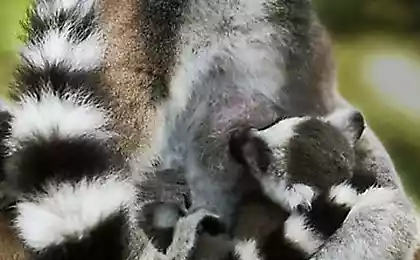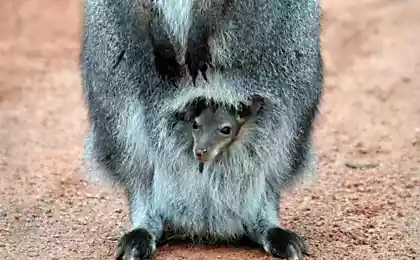172
In the zoo of Britain were born cubs of Canadian beaver
In the British zoo Drusillas Park Zoo was born two young Canadian beaver. Babies born last month are perfectly healthy, have a great appetite and grow fast, according to the zoo's website.
Photo: Drusillas Park Zoo
Bobryata has already passed his first medical examination and is ready to appear before numerous visitors to the zoological park. In addition, on the page in Facebook launched a competition called “Best name for bean”.
The Canadian or North American beaver (Latin Castor canadensis) as well as the Eurasian river beaver settles near rivers and lakes. It lives in North America (in Canada, Alaska and almost everywhere in the United States) and is the second largest rodent after the capybara. It was imported to the Scandinavian countries in 1937, from where Karelia and the Leningrad region spread widely.
The Canadian beaver is very similar to the Eurasian (ordinary) boron and has long been considered one of its subspecies. However, its karyotype consists of 40 chromosomes, while the Eurasian beaver has 48. These two subspecies cannot interbreed with each other. In addition, the Canadian boron has a more elongated torso, a wide chest, a short head with closely located convex eyes and larger ears.
Another feature is the long intestine, which allows the beaver to eat larger and solid foods. Its diet consists of bark, cambia of soft hardwood trees such as willow, poplar, alder, maple, birch and aspen. It also uses grassy vegetation that grows both near the shores of water bodies and water. In captivity, they are fed sweet potatoes, carrots, potatoes and lettuce leaves.
Beavers are monogamous animals. They only have offspring once a year. Pregnancy in a female lasts 105-107 days, after which she is born 1-6 beabriants. After 2-4 weeks after birth, babies begin to eat plant foods. Sexual maturity in both males and females occurs at 2 years. In the wild, borons live from 10 to 17 years, and in captivity can live up to 35 years.
Source: zoopicture.ru
Photo: Drusillas Park Zoo
Bobryata has already passed his first medical examination and is ready to appear before numerous visitors to the zoological park. In addition, on the page in Facebook launched a competition called “Best name for bean”.
The Canadian or North American beaver (Latin Castor canadensis) as well as the Eurasian river beaver settles near rivers and lakes. It lives in North America (in Canada, Alaska and almost everywhere in the United States) and is the second largest rodent after the capybara. It was imported to the Scandinavian countries in 1937, from where Karelia and the Leningrad region spread widely.
The Canadian beaver is very similar to the Eurasian (ordinary) boron and has long been considered one of its subspecies. However, its karyotype consists of 40 chromosomes, while the Eurasian beaver has 48. These two subspecies cannot interbreed with each other. In addition, the Canadian boron has a more elongated torso, a wide chest, a short head with closely located convex eyes and larger ears.
Another feature is the long intestine, which allows the beaver to eat larger and solid foods. Its diet consists of bark, cambia of soft hardwood trees such as willow, poplar, alder, maple, birch and aspen. It also uses grassy vegetation that grows both near the shores of water bodies and water. In captivity, they are fed sweet potatoes, carrots, potatoes and lettuce leaves.
Beavers are monogamous animals. They only have offspring once a year. Pregnancy in a female lasts 105-107 days, after which she is born 1-6 beabriants. After 2-4 weeks after birth, babies begin to eat plant foods. Sexual maturity in both males and females occurs at 2 years. In the wild, borons live from 10 to 17 years, and in captivity can live up to 35 years.
Source: zoopicture.ru
An unexpected aspect of the experiment NASA—Roman woman and Dolphin
Books that can change your view of the world and man's place in it























